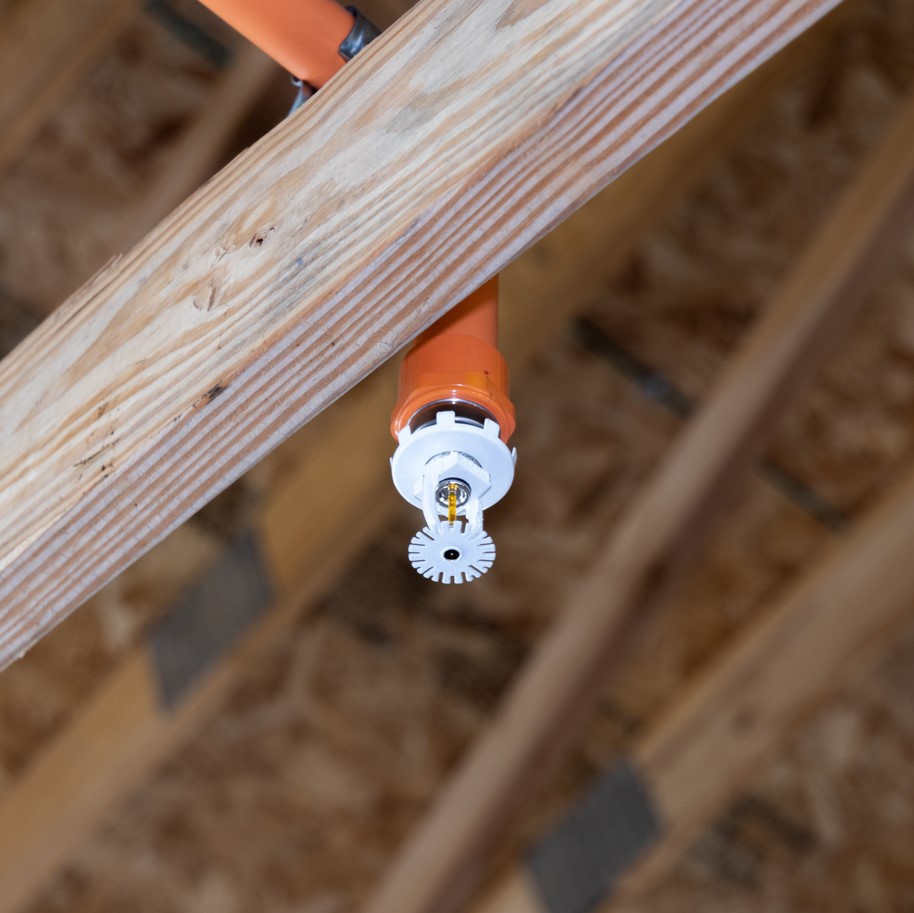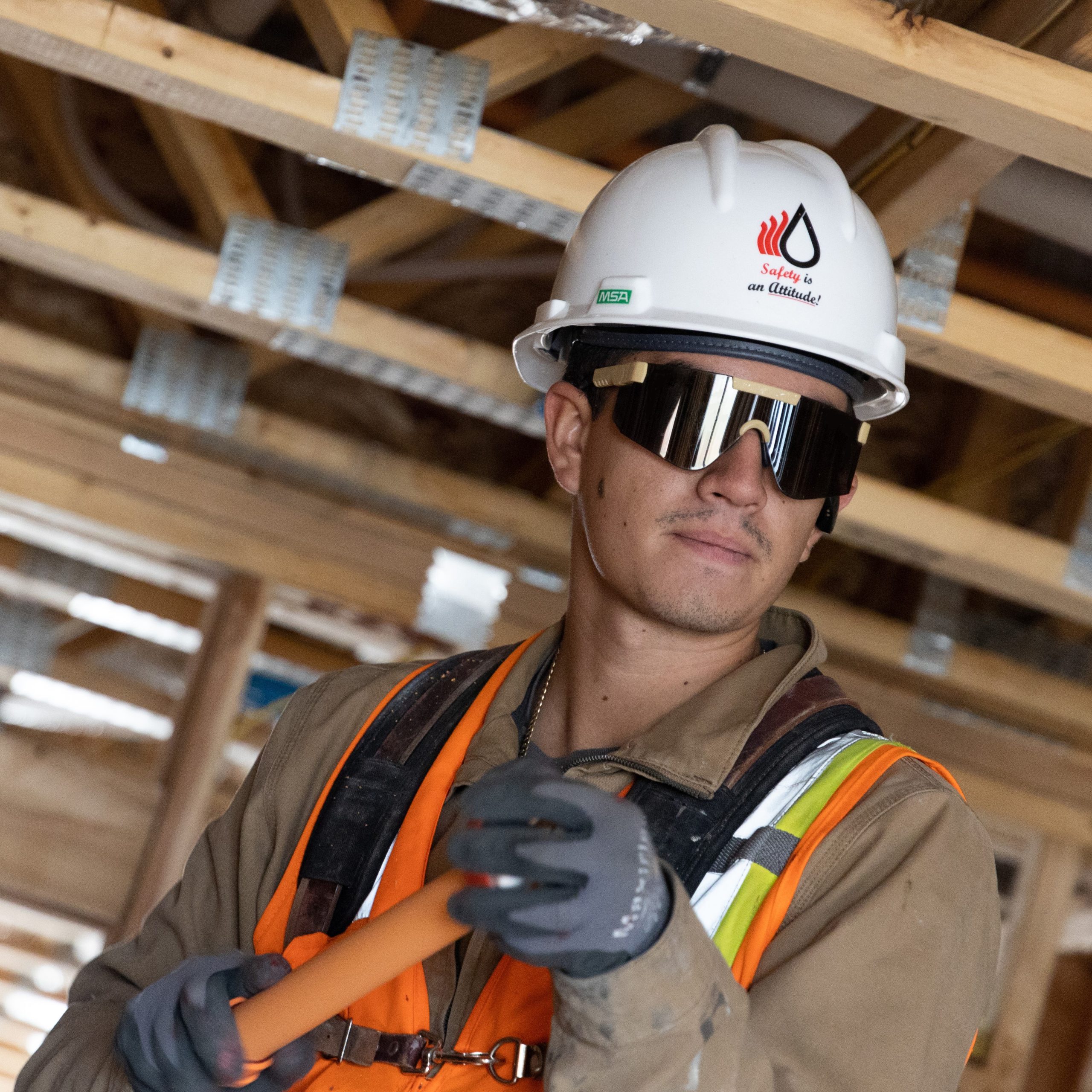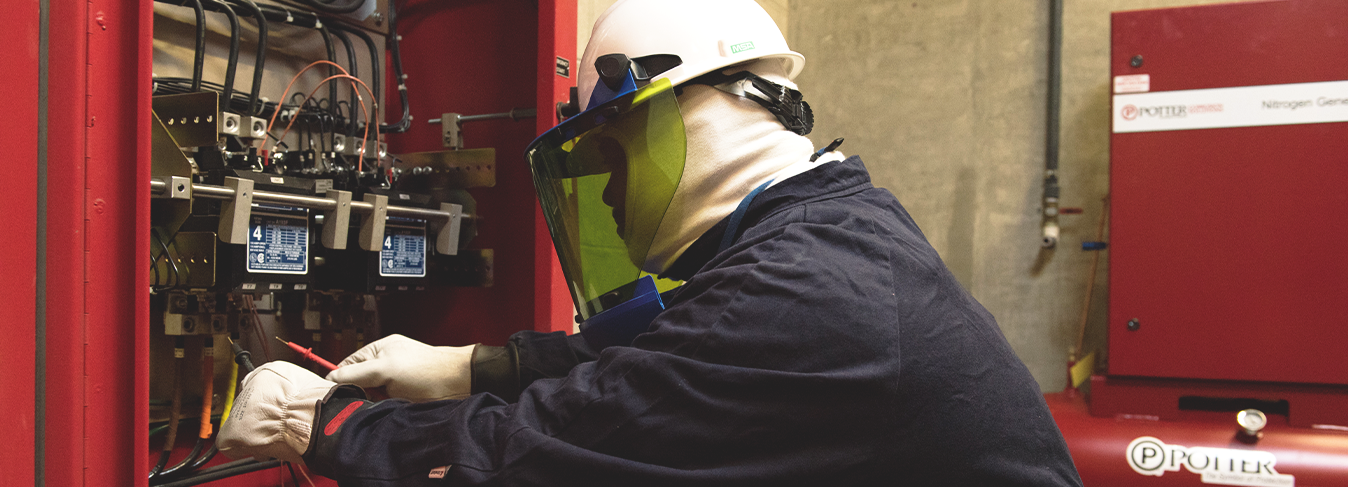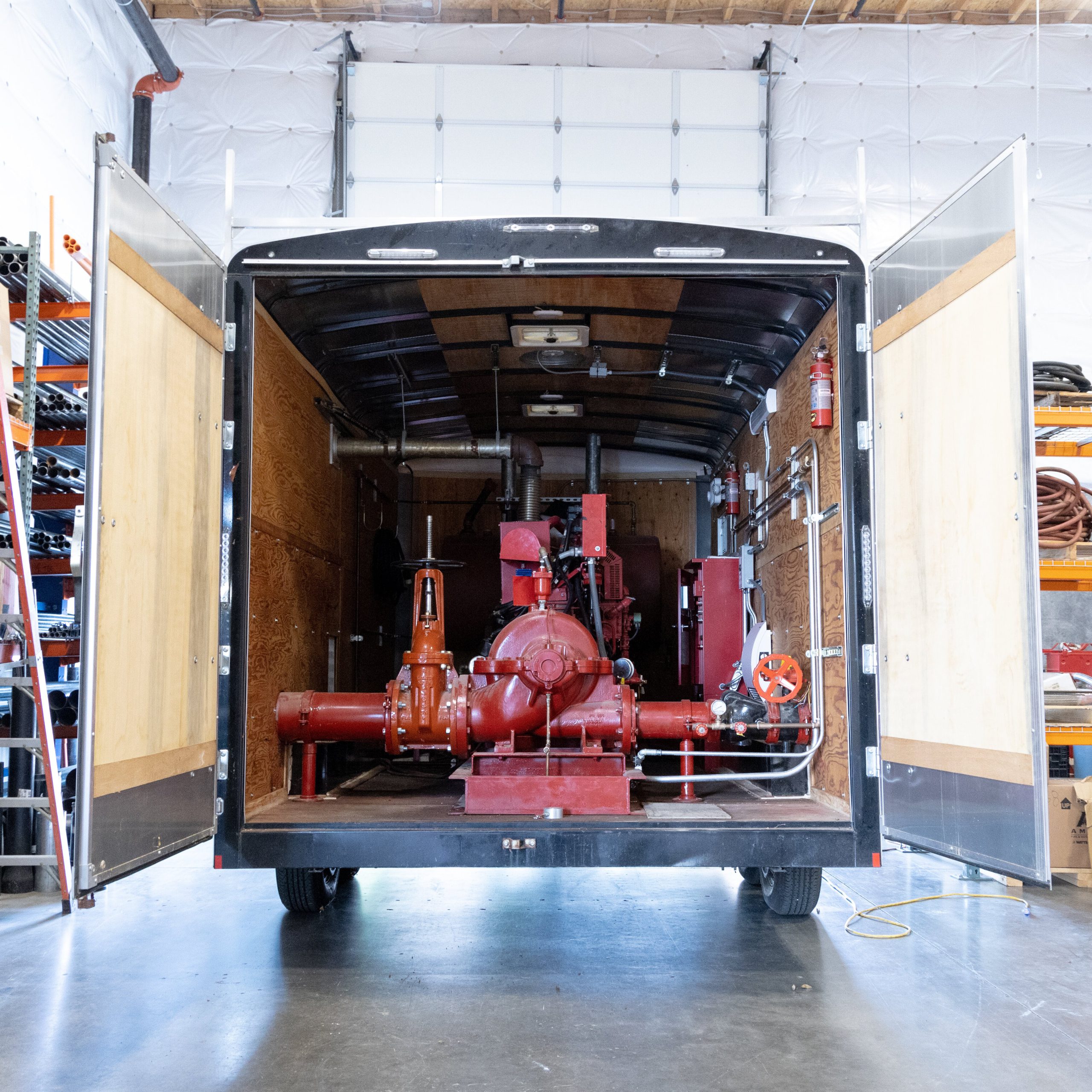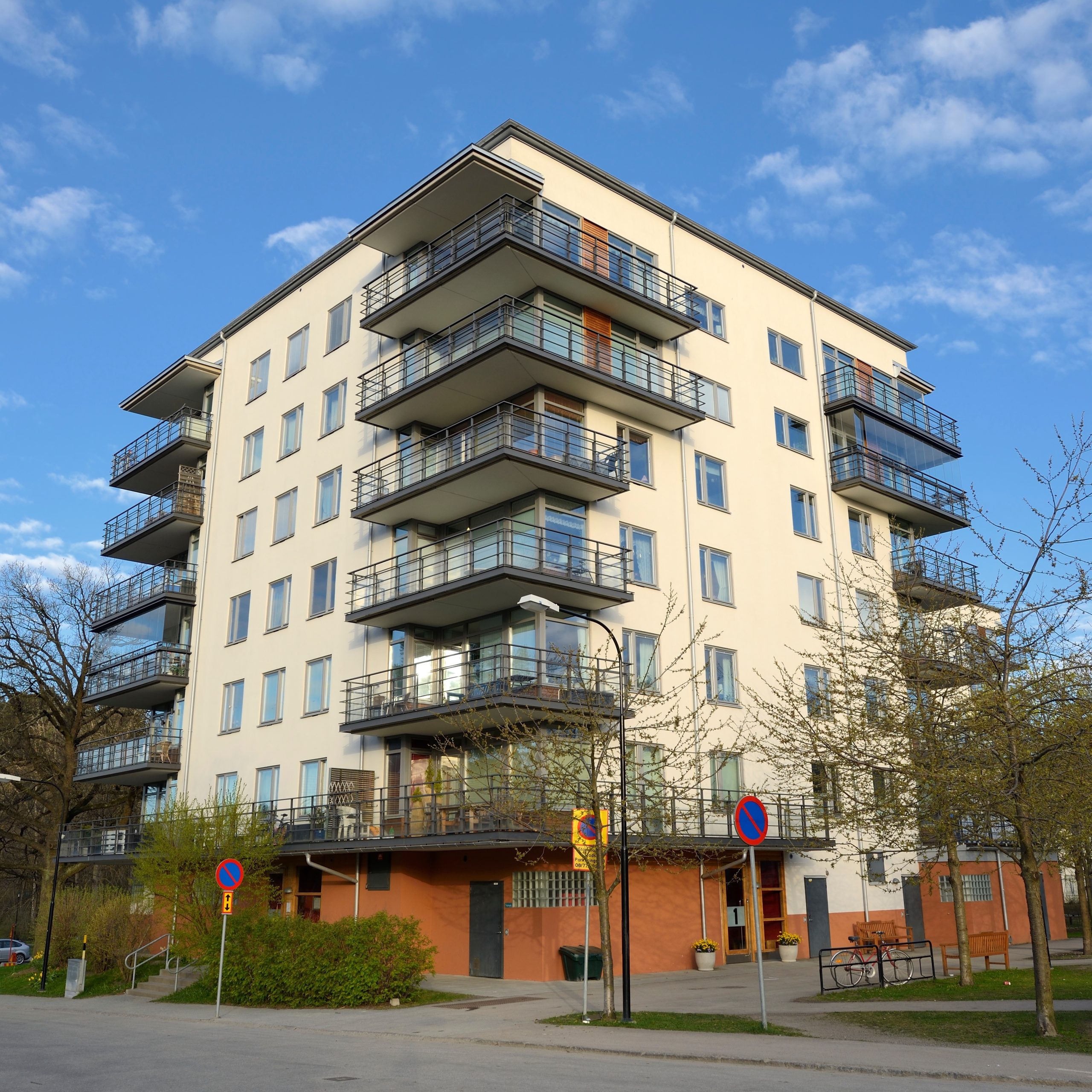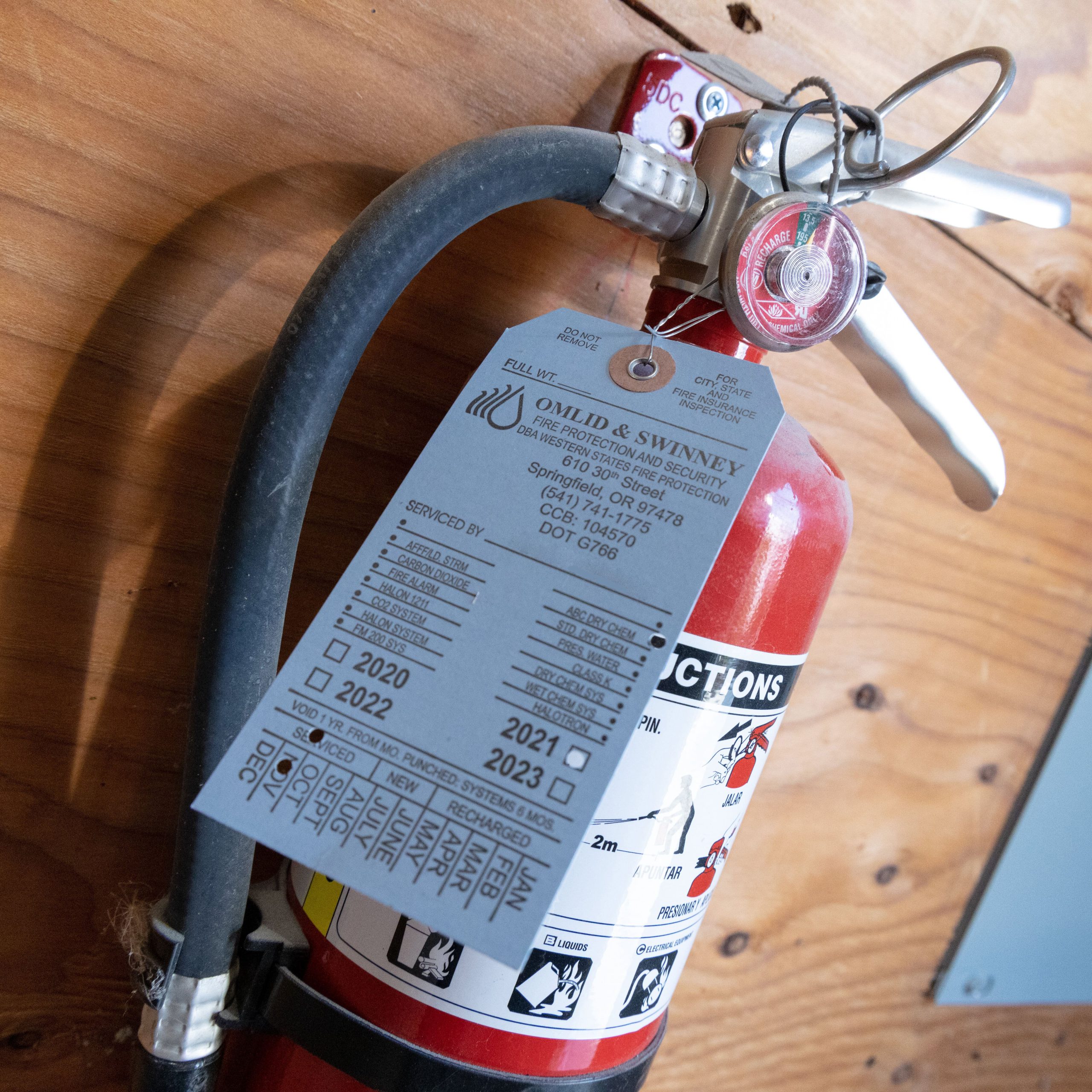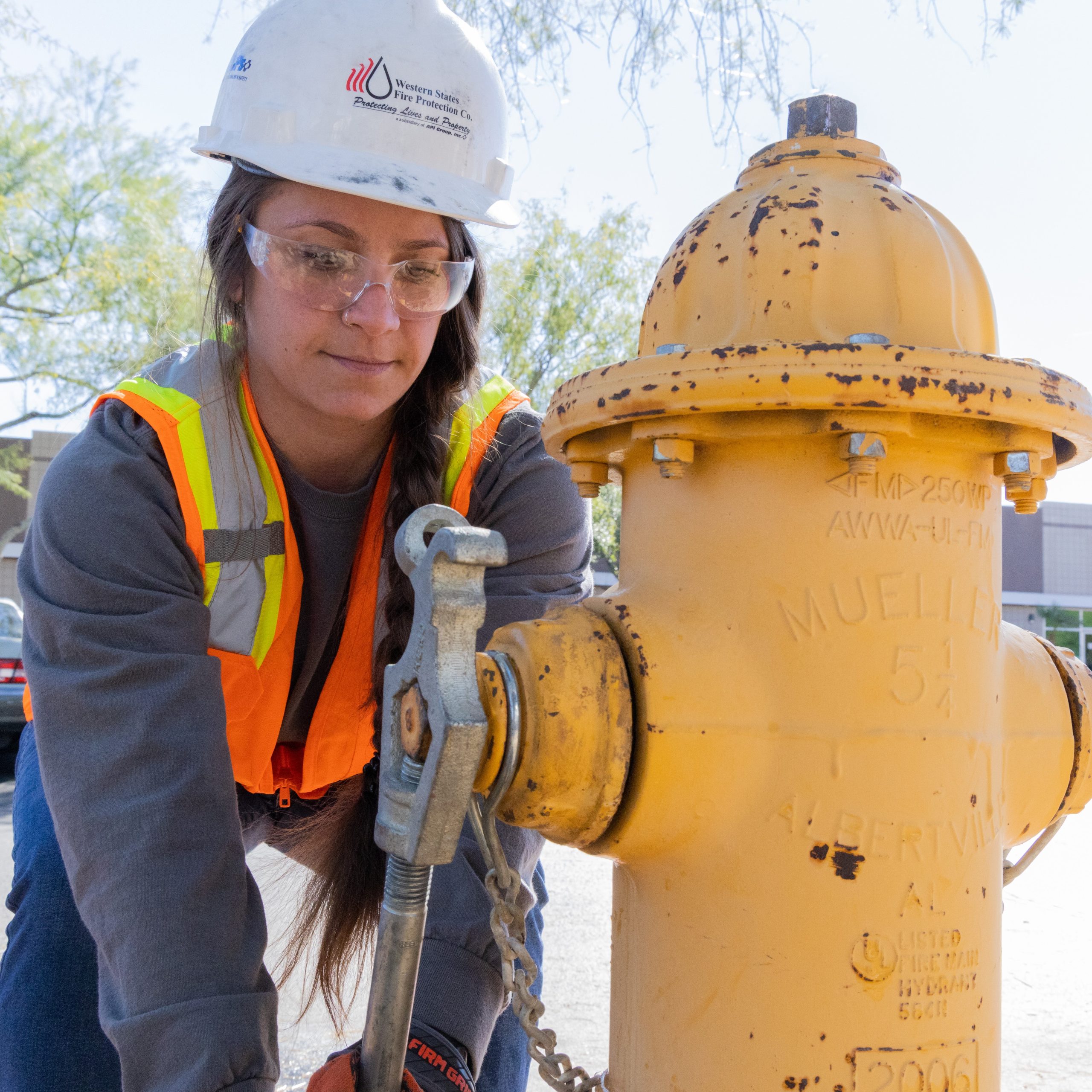Deciding which fire protection system is right for your needs can be difficult. Let’s discuss the difference between two popular options, deluge and pre-action. Deluge systems are filled with unpressurized air and open sprinkler heads, while pre-action systems are filled with pressurized air and each sprinkler head is activated individually depending on the location of the fire.
Deluge Systems
Deluge Systems are activated by smoke or heat detectors, which can preempt flames. A flood of water or foam is released through an open-sprinkler, nozzle, or foam generator through an unpressurized piping system that is directly connected to a water source. This system employs all of its open heads at once, releasing water or foam quickly for hazardous areas, unlike a standard sprinkler system with closed heads that requires each individual sprinkler head to be activated before opening.
The pipes in a deluge sprinkler system are filled with unpressurized air. Water isn’t released into the pipe until the system is activated, making it a dry pipe system. Dry pipe systems are less likely to encounter corrosion problems and issues with freezing temperatures, as the pipes don’t contain any water.
These systems are a very popular option in industrial applications where fires can spread rapidly. Chemical plants, aircraft hangars, and power plants are some of the most common applications for a deluge system, as valuable assets need to be protected against the rapid spread of fire.
Pre-Action Sprinklers
Pre-Action Sprinklers are activated by heat, smoke, or flames. A combination of wet and dry pipe sprinklers are activated and the pipes are filled to extinguish the hazard and protect the area around it. Each sprinkler head is individually opened, releasing water on the affected area, not the entire building. This two-step activation protects assets from unnecessary damage.
The pipes in a pre-action sprinkler system are filled with pressurized air to protect assets from any damage in the instance of accidental valve openings. Once the system is employed there is a two-step activation process. Water fills all of the pipes, and the sprinkler heads are opened to release the water onto the affected area..
Water-sensitive environments can be damaged by an overblown protection area. Pre-action systems only employ sprinklers in the directly affected areas, making them the best option for process control rooms, data centers, computer rooms, freezer warehouses, archives, museums, and libraries. This requires a more complex design, increasing both installation and maintenance costs. However, these costs can be greatly offset by the risk of damage to valuable assets in the event of a fire.
Western States Fire Protection
Western States Fire Protection develops and installs quality sprinkler systems you can trust. We can customize your system for the safety of your building’s occupants, equipment, and other assets. Our team is experienced in all types of fire systems and can guide you through the options to match you with the correct protection.
If you would like more information on which fire protection system is best for your commercial or residential space, contact Western States Fire Protection today!
